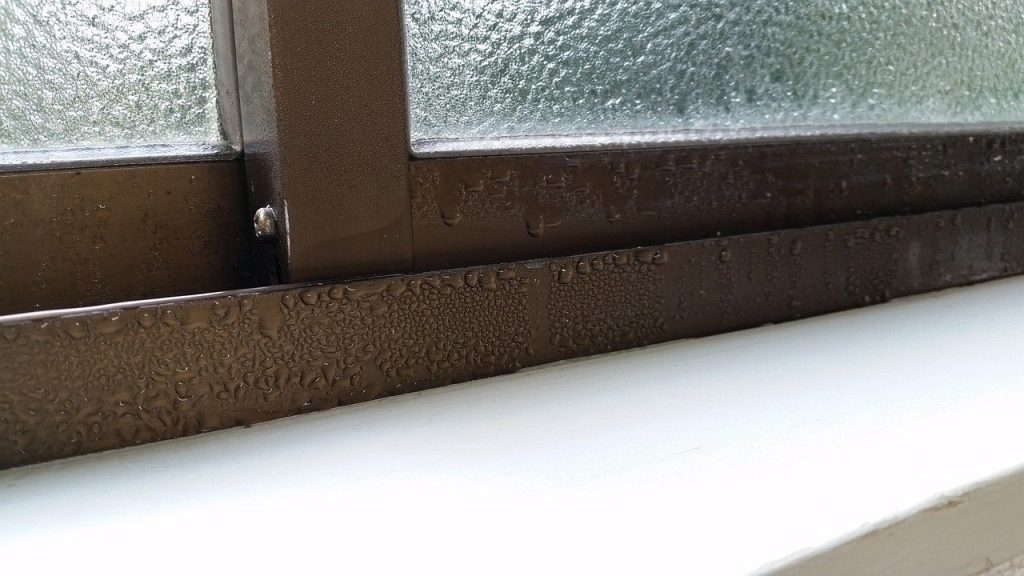Dampness can be a big issue in your home because it can lead to decay and different types of moulds. Of the various causes of dampness, condensation is by far the easiest and cheapest to fix. You also do not necessarily need professional help to solve this problem. Whether you live in an old building or a new building, condensation can impact your home significantly.
It is a fairly easy problem to solve, but you don’t want to leave it to the point where it has done irreversible damage to your home. Prevention is always better (and cheaper) than trying to fix extreme water damage.
What is condensation?
As you may know, there is always moisture in the air. When it gets cold, it starts to form water droplets. You might notice the windows in your home fogging up on cold mornings on your bathroom mirrors steaming up after a hot shower. This is condensation.
Even if the weather is dry, condensation will appear when it is cold on windows, corners, mirrors, behind cupboards, or on any cold surface where there is very little movement of air.
How is condensation formed?
If you cast your mind back to your primary school science classes, you might remember that condensation is the process where water vapour (gas) turns into water droplets (liquid). Condensation can happen when the air becomes too saturated to hold any more water.
It can also happen when the air temperature is cooled to its dew point. This is why you will find condensation or dew drops on your lawn on cold mornings or on the outside of a cold glass.
Examples of condensation
Condensation appears throughout our lives more frequently than you might expect. For example, clouds and rain are caused by condensation. Clouds form as water vapour cools in the atmosphere. The water vapour cools to its dew point temperature and condenses to form water droplets. As the droplets become heavier, it falls to the ground as rain.
Foggy windows and mirrors are also examples of condensation.
You might also find beads of moisture on your car windows when it is cold outside. If you wear glasses, perhaps you will notice them getting foggy when you step from an air-conditioned building to the hot outdoors.
Causes of condensation
Now, let’s focus on condensation in the home. The areas where condensation occurs the most are in your bathroom and your kitchen. This is partly because the temperature in these rooms constantly fluctuates. Your bathroom can go from being very cold, to very warm and humid after somebody takes a shower. Your kitchen will change temperatures if somebody uses the stove or the oven.
Activities like showering, cooking, or drying clothes in the tumble dryer release warm moisture into the air. When this warm air comes into contact with a cold surface like glass or tile, it cools very quickly and forms water droplets.
Therefore, the formation of condensation in the home is most common in winter. We also tend to keep our heaters on high and our windows closed during these colder months. When the temperature outside drops, then water can also start to appear on your wall.
What happens if condensation is not dealt with?
It might seem relatively harmless, but letting condensation in your home get out of control can lead to a myriad of problems. For one, it can damage your paint to the point where it begins to deteriorate. It can also cause the wood around your windows to decay. Untreated condensation can also cause black mould to grow.
Aside from black mould being visually unattractive, it can cause several health problems. It can cause skin rashes, sinus issues, and respiratory diseases like bronchitis. If you do find mould in your home, treat it as soon as possible with a Health and Safety Executive (HSE) approved fungicidal wash and follow the instructions on it.
How to deal with condensation
Fortunately, there are several ways in which you can deal with condensation in your home. Buying different cleaning tools, investing in humidifiers, and making sure your home is ventilated are all preventative measures you can take to keep your home free from water damage.
Change your cleaning tools
You need to be able to clean moisture from the surfaces in your home quickly and efficiently. Towels are a good option but aren’t very efficient because they take a very long time to use.
After all, you will have to wring them out when they get too saturated with water.
Squeegees are a better tool to use for cleaning condensation. You can easily dry a surface with a single wipe. You can then follow up with a soft towel to get any remaining moisture. It is convenient to keep a squeegee in the bathroom so that you can dry your mirror after every shower.
Invest in a dehumidifier
Dehumidifiers are a great solution for reducing the humidity in your home. These machines pull in air through a fan and remove the moisture.
You will find that this results in there being less moisture on your surfaces. Before you invest in one, it is important to determine the size of the unit you will need. This generally depends on the size of your home as well as the humidity levels.
Luckily, you’ll find that most dehumidifiers are classed according to house size so that you can easily find one suitable for your space. But, if you are unsure of the size you need, it is best to err on the side of caution and go for a larger size.
Change the way you cook
You don’t have to buy anything for this solution. You can reduce the release of excess steam while you are cooking by making sure you keep lids on your pots and pans. If you own an extractor fan, make sure you use that as well.
Keep your windows open
If it is not possible to buy special equipment like an extractor fan or a dehumidifier, make sure you open the windows to allow the hot air to escape. You can do this while you are cooking, running the tumble dryer, or taking a shower.
Heat your home evenly
You can avoid condensation forming on cold surfaces by making sure your home is heated evenly. You can achieve this by using your home’s heating system (if you have one).
It is much better to have all of your rooms at a consistently low temperature than it is to have it fluctuate between hot and cold several times a day. You can also close the doors to any rooms that you do not use frequently. Then, make sure you keep a window open in those rooms to prevent condensation.
Insulation and double-glazed windows
Cold spots on ceilings or walls can cause condensation. You can attempt to remedy this by installing loft insulation or insulating cavity walls subject to professional assessment. If you have single-glazed windows, you might want to replace them with double-glazed windows. If you do make use of these two solutions, make sure that your home is sufficiently ventilated.
Final Thoughts
There are several ways in which you can prevent condensation from causing irreversible damage to your home. If you implement these various solutions, you will be able to prevent the problem from reaching the point of no return.
You will also be keeping your family safe from health problems caused by black mould. Remember, it is far better to prevent water damage than it is to fix it! If you are unsure of how to deal with condensation obtaining an RICS survey from a chartered surveyor will provide you with more insight into the cause and potential remedies.





